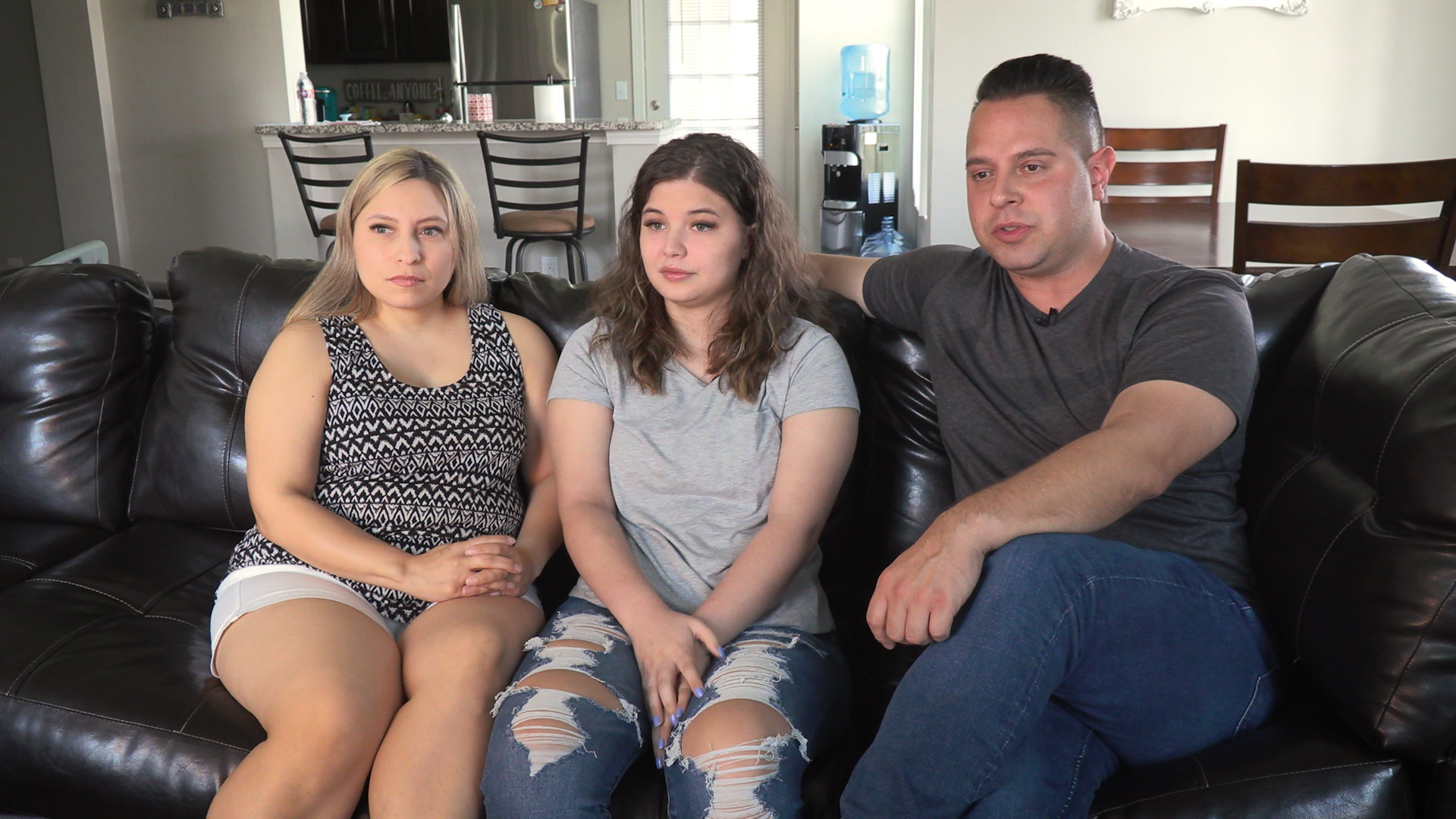
Appreciating Every Day
UNM Neurosurgery Team Heals Teen’s Life-Threatening Brain Bleed
When 16-year-old Lilliana Newman woke up on Monday, June 15, with a piercing headache, her dad, Chris thought it might be a severe migraine and gave her painkillers, but nothing worked to ease the pain. Then she said, “I need to go to the hospital,” and fainted.
Chris called for an ambulance, which brought Lily to an urgent care center capable of treating migraines. They were unable to alleviate her symptoms so they transferred her to a community hospital on Albuquerque’s West Side.
“They did a CAT scan,” Chris recalls. “Within five minutes they realized it was a brain bleed. They flew her over to UNM Hospital, because apparently that’s the only team in the state that can do surgery on kids like that.”
Awaiting the chopper was a team led by Andrew Carlson, MD, an associate professor in the UNM Department of Neurosurgery.
“We got the imaging and saw this huge bleed in the cerebellum,” he says. “She had an arterial venous malformation – a blood vessel tangle that was causing blockage of the spinal fluid and building up pressure in her brain.”
Carlson was concerned, because mechanical pressure from fluid buildup in the brain can be lethal. “It was uncertain whether she was going to survive.”
Arterial venous malformations are usually present from birth, and no one knows what causes them. “These things are very tricky to take care of,” Carlson says. The first step was to relieve the pressure on Lily’s brain by inserting a shunt to drain off the fluid.
Over the next few days Carlson and his team performed additional tests, including an angiogram, which creates an image highlighting the blood vessels, and mapped out the best approach for removing the tangled blood vessels.
Chris and Amy, Lily’s mom, who had been at work when her symptoms began, took turns staying by her bedside in the intensive care unit at UNM Children’s Hospital.
Three days after Lily arrived at the hospital, Carlson and his team opened Lily’s skull and used a special glue to seal off most of the blood vessels. Then he performed delicate microsurgery to remove the malformation from her brain. “That is the tricky part,” he says. “There aren’t a lot of places around that do those kinds of surgeries.”
Lily spent another week in the ICU before being transferred to a general pediatrics floor while starting physical and occupational therapy at Carrie Tingley Hospital. Two months later, she still uses a walker as she regains coordination on the right side of her body.
The rising junior at Volcano Vista High School has only fragmentary memories of the ordeal.
“The whole time in the hospital I wasn’t even worried,” she says. “I was just confused. Because when I woke up I was like, “Why am I here?” I just thought it was a migraine, so I was so confused when I woke up. I didn’t even know that I had had surgery.”
Chris Newman is thankful, meanwhile, that Carlson and his team were on hand to treat Lily.
“I’m grateful for his decision-making and the meticulousness of his planning,” he says. “We always had great confidence that they were going to do the right thing. Everyone, down to the physician’s assistants and the nurses that work for him, gave us great confidence that this is something that they could do.”
Adds Amy, “It was just such a relief that he and his team were able to do it. We’re just super grateful for saving her life, honestly. It’s just left us to really appreciate the people in our lives –appreciate every day and not take anything for granted.”